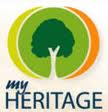** EWGS President, Patricia Bayonne-Johnson’s Story
** Paula Stuart-Warren’s Quotes from TPCGS Conference
** Ten Calorie Candy??
** James Tanner on Social Media
** Canadian Research Websites
** Crazy Names…Not Just for Movie Stars
Patricia Bayonne-Johnson, president of the Eastern Washington Genealogical Society, and her team of helpers have been working on a monumental project. Pat’s ancestors were sold as slaves in 1838 by the Jesuits in Maryland to Louisiana to help finance Georgetown University. The president of Georgetown University came to Spokane last month to meet with Pat! Here’s the link to the story:
************************************
I was privileged to be in the audience learning from Paula Stuart-Warren last month at the Tacoma-Pierce County Genealogical Society’s conference. She taught us so much and I could fill up this entire post with her pearls. But I will limit myself to four wonderful quotes from Paula:
- “Not everything in a book is correct and not all books are digitized; we DO still need libraries, so GO to your library!”
- “Which is more important, preservation or sharing? Which deserves your best effort?” Paula was speaking here about how to organize your family history and what to do with all that information and “stuff.”
- “If you don’t belong to a local genealogical society where you live, you’re missing out on the best help there is.”
- “How much time do you spend RE-searching….chasing “shiny objects or looking at the same record over and over….because you are un-organized??”





